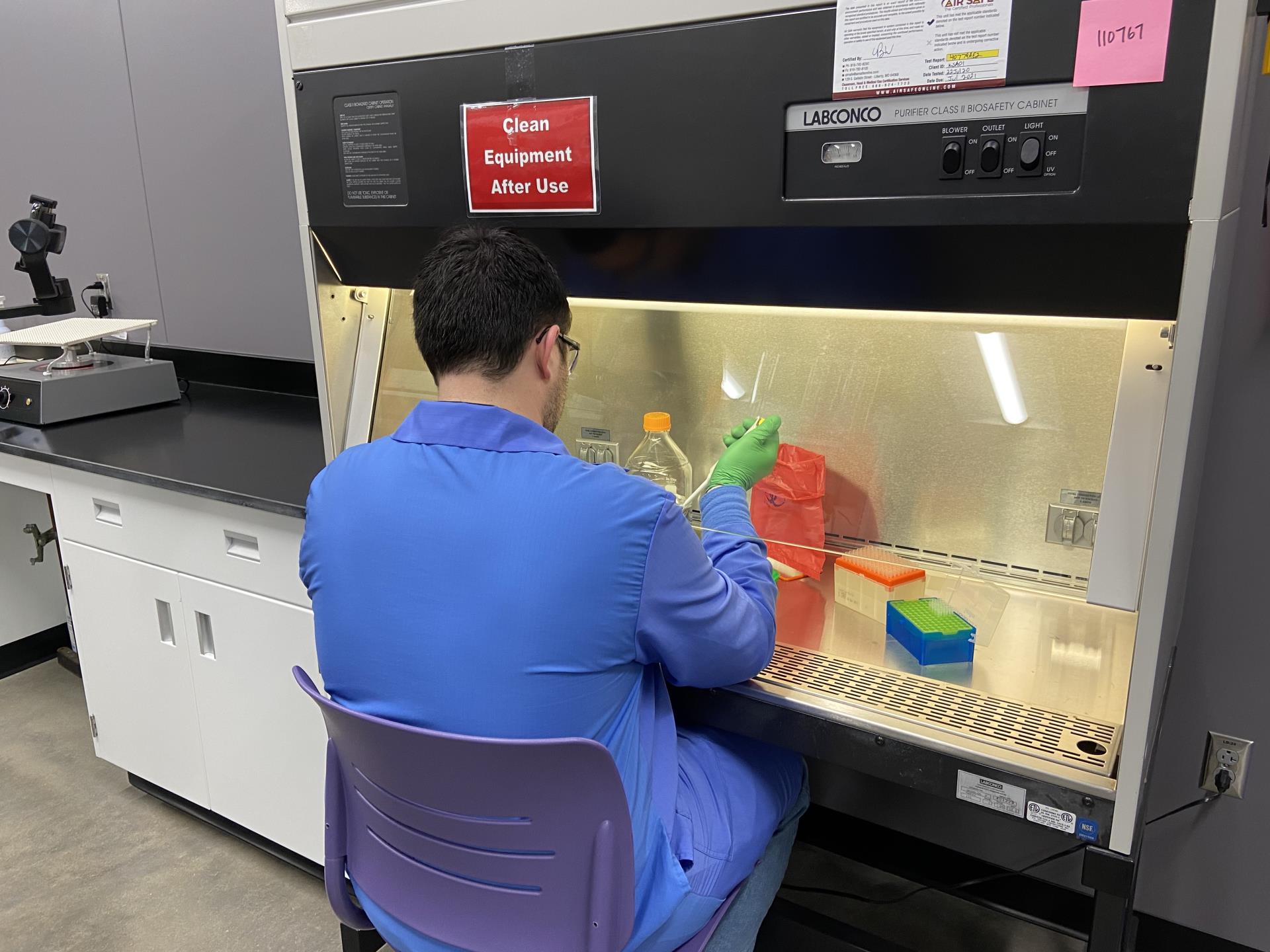 In microbiology, we use a range of classic cultural methods that involve inoculating media and then reading the biochemical changes. As you can see here, our microbiologist is aseptically transferring bacteria from one growth medium to another. Many of our methods incorporate a step like this. We do this aseptically to assure that cross-contamination does not occur in the sample testing process.
In microbiology, we use a range of classic cultural methods that involve inoculating media and then reading the biochemical changes. As you can see here, our microbiologist is aseptically transferring bacteria from one growth medium to another. Many of our methods incorporate a step like this. We do this aseptically to assure that cross-contamination does not occur in the sample testing process.
We also rely on molecular-based technologies such as DNA amplification and antibody-antigen interactions to detect foodborne pathogens. The polymerase chain reaction, or PCR, machine you see here make millions of copies of DNA to help us identify foodborne pathogens such as Salmonella or shiga-toxin producing E. coli. Our work helps to verify that food processing and manufacturing processes are effective at preventing foodborne disease and that our food supply remains wholesome.